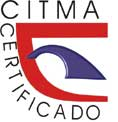Carbon footprint measuring in a quarry from Gibara municipality
Keywords:
carbon footprint, quarries, climate change, greenhouse gasesAbstract
The carbon footprint is an environmental indicator that aims to describe the impact that a company or organization has on the atmosphere, and therefore on global warming and climate change, by emitting greenhouse gases, mainly CO2. The purpose of this work was to determine the carbon footprint at the Molino Doscientosmil quarry in the municipality of Gibara, Holguín, in order to develop a set of measures based on this indicator that will reduce harmful emissions into the atmosphere. Using the Greenhouse Gas Protocol methodology, the quarry’s carbon footprint for scope 1 was calculated to be 84 932,445 tCO2eq. It was also identified that the main sources of gas emission in the quarry are the diesel fuel used by the start-up, loading and transport equipment and the energy consumed by the National Electro energetic System. Regular maintenance of equipment for efficient operation, reforestation of mined areas and the deployment of renewable energy sources would help to reduce CO2 emissions into the atmosphere and thus the carbon footprint.Downloads
References
Belaunde, B. E. (2021). Cálculo de la huella de carbono en una refinería. (Tesis de maestría, UNIR La Universidad en Internet). Consultado: 12/11/2024. Disponible en: https://reunir.unir.net/handle/123456789/12170
Castillo, K. G. (2023). Identificación de los focos de Emisiones de GEI en la UB Minera Comandante Ernesto Che Guevara. (Trabajo de Diploma, Universidad de Moa).
CITMA. (2017). Enfrentamiento al Cambio Climático en la República de Cuba. Tarea Vida. Ministerio de Ciencia, Tecnología y Medio Ambiente. Consultado: 12/11/2024. Disponible en: http://www.contraloria.gob.cu/documentos/noticias/FOLLETO% 20TAREA%20VIDA.PDF.
Jandira, M. U. (2016). Diagnóstico tecnológico de la cantera de áridos Los Caliches en la provincia de Holguín. (Trabajo de Diploma, Universidad de Moa). Consultado: 12/11/2024. Disponible en: http://ninive.ismm.edu.cu/handle/123456789/2151
Colán, J. C. (2019). Determinación de la huella de carbono de una unidad minera de oro a tajo abierto. (Tesis de grado, Universidad Nacional Agraria La Molina, Lima, Perú). Consultado: 12/11/2024. Disponible en: http://45.231.83.156/bitstream/handle/20.500.12996/4041/benites-colan-jose-carlos-antonio.pdf?sequence=4&isAllowed=y
De Catalunya, G. (2011). Guía práctica para el cálculo de emisiones de gases de efecto invernadero (GEI). Barcelona: Oficina Catalana del Canvi climàtic. Consultado: 12/11/2024. Disponible en: https://www.academia.edu/download/53781002/110301_Guia_practica_calcul_emissions_rev_ES.pdf
Elier, M. R. (2017). Estimación cuantitativa de la Huella del carbono en el cultivo de la cañade azúcar. Villa Clara. Centro Agricola, 44(1), 71-79. Consultado: 12/11/2024. Disponible en: http://scielo.sld.cu/pdf/cag/v44n1/cag10117.pdf
Fernández, J. C. (2020). Estimación de la Huella de Carbono en la producción de vidrio en Cuba. Mineria y Geologia, 36(4), 428-440. Consultado: 04/05/2024. Disponible en: http://scielo.sld.cu/scielo.php?script=sci_arttext&pid=S1993-80122020000400428&lng=es&tlng=es.
Fernández, J. C. (2021). Estimación de la Huella de Carbono en la Industria Papelera. Avances, 23(4), 430-439. Consultado: 04/05/2024. Disponible en: https://www.redalyc.org/articulo.oa?id=637869393006
Huarsaya, K. J. (2024). Análisis de la comparación de las emisiones (directa e indirecta) de la huella de carbono del data master del servicio de reubicación de TopSoil realizado en el proyecto minero Antamina, Ancash, 2023. (Tesis de grado, Universidad Continental, Arequipa, Perú). Consultado: 04/05/2024. Disponible en: https://hdl.handle.net/20.500.12394/14494
Laugart, Y. G. (2023). La Huella de Carbono en la UB Minera de la Empresa Comandante Ernesto Che Guevara. (Trabajo de Diploma, Universidad de Moa).
Ponce, R. R. & Rodríguez, D. A. M. (2016). Determinación de la huella de carbono del Country Club el Bosque-sede Chosica. (Trabajo de de grado). Consultado: 04/05/2024. Disponible en: http://45.231.83.156/bitstream/handle/20.500.12996/2584/T01-P655-T.pdf?sequence=1&isAllowed=y
Valderrama, J. O., Espíndola, C., & Quezada, R. (2011). Huella de Carbono, un Concepto que no puede estar Ausente en Cursos de Ingeniería y Ciencias. Formación universitaria, 4(3), 3-12. DOI: 10.4067/S0718-50062011000300002.
Published
How to Cite
Issue
Section
Copyright (c) 2025 Gianna Banesa Moya-Rivera, Luis Alberto Ramírez-Meléndez

This work is licensed under a Creative Commons Attribution-NonCommercial 4.0 International License.
- Authors retain copyright and guaranteeing the right magazine to be the first publication of the work as licensed under a Creative Commons Attribution-NonCommercial that allows others to share the work with an acknowledgment of the work's authorship and initial publication in this journal.
- Authors may establish separate supplemental agreements for the exclusive distribution version of the work published in the journal (eg, place it in an institutional repository or publish it in a book), with an acknowledgment of its initial publication in this journal.
- Authors are allowed and recommended to disseminate their work through the Internet (e.g., in institutional telematic archives or on their websites) before and during the submission process, which can produce interesting exchanges and increase citations of the published work. (See The effect of open access)









